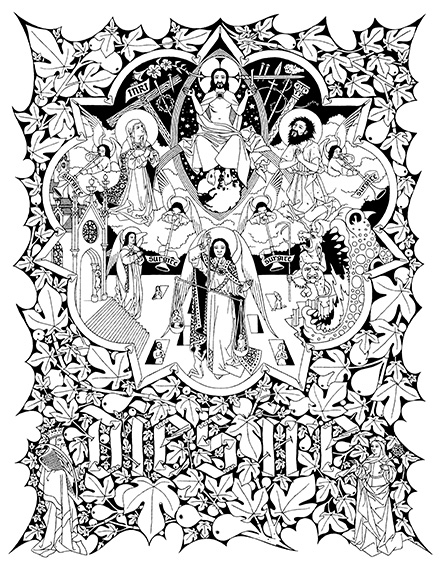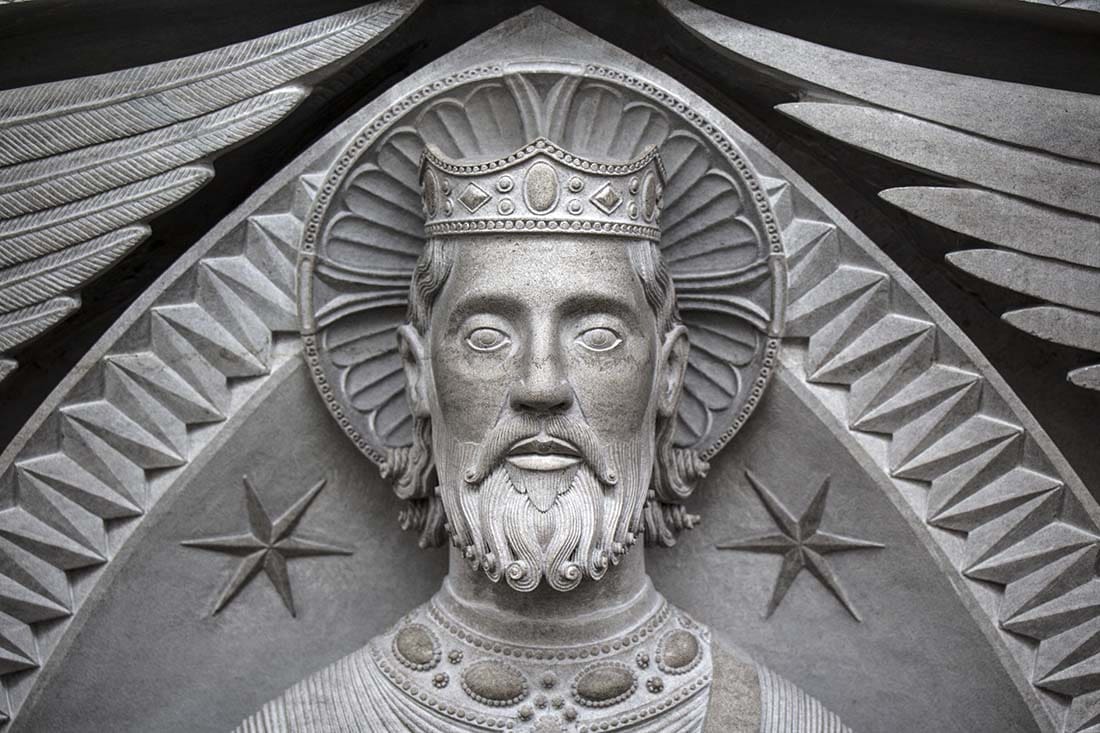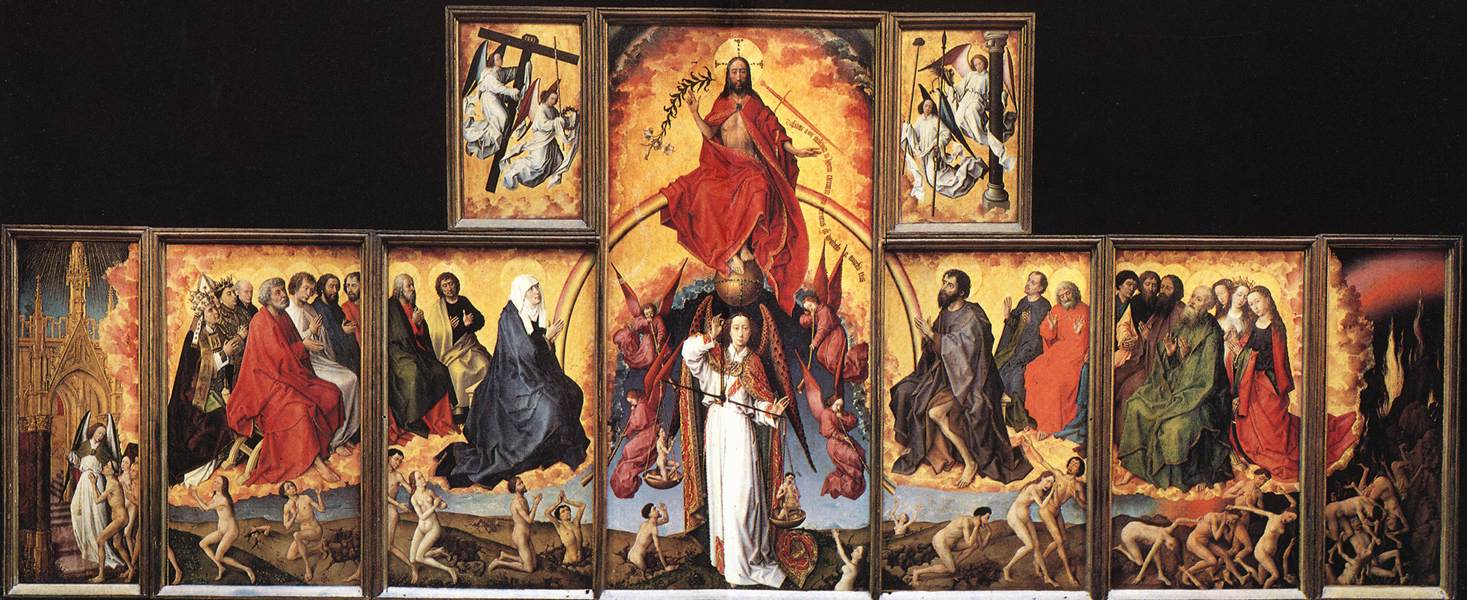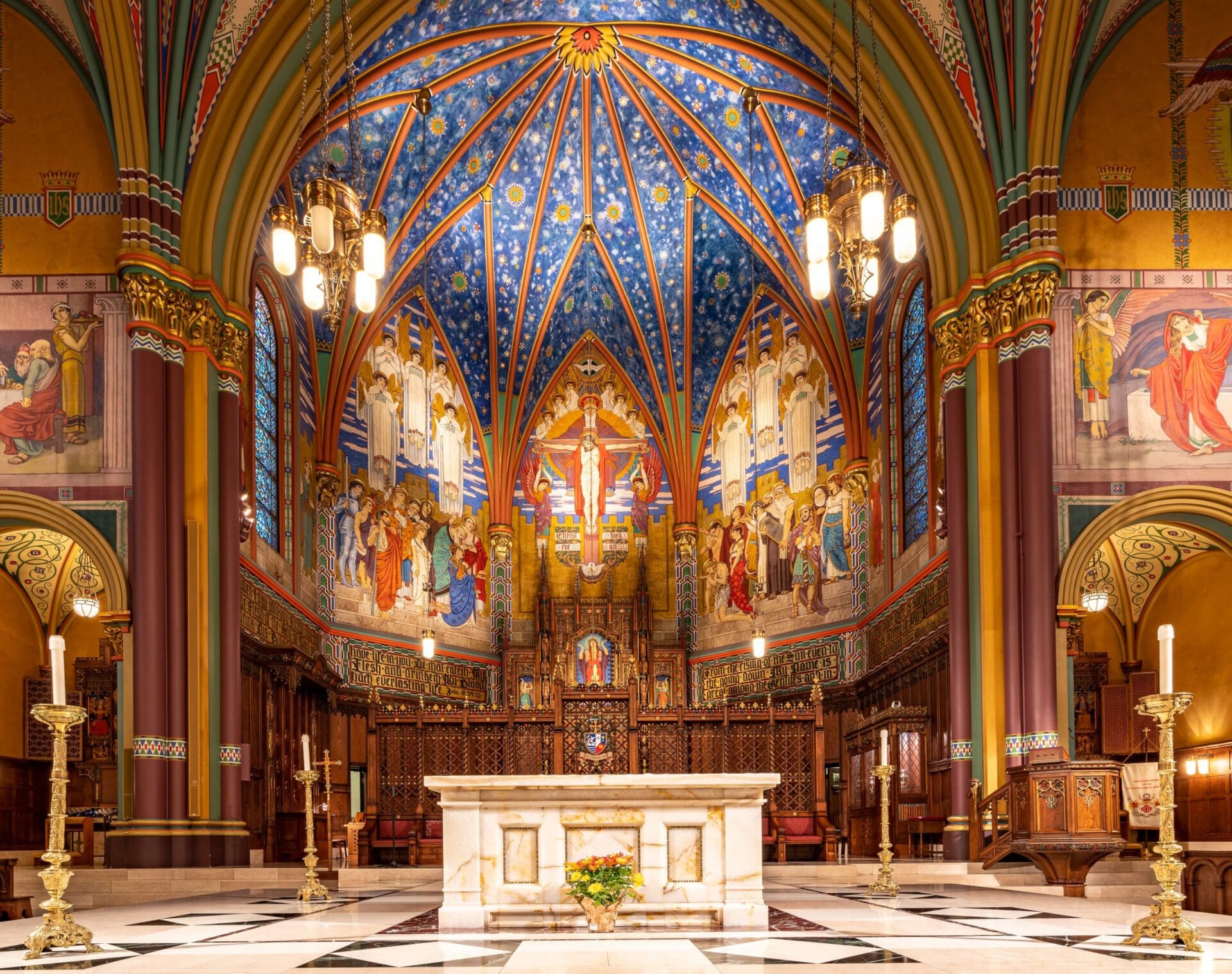Online Edition
February 2015
Vol. XX, No. 8

From the artist:
The iconography of the Last Judgment has long fascinated me; this is the third large depiction of it that I have made. Many different late medieval paintings and prints informed its composition; the influence of Rogier van der Weyden is especially obvious.
Christ returns on the clouds, seated on a rainbow and surrounded by a mandorla. His feet rest on an orb (with Jerusalem at its exact center), signifying His dominion over the entire world. He displays His five wounds, and the instruments of His passion appear beside Him. A lily at His right hand represents mercy and a sword at His left hand represents justice. Trumpeting angels call the dead to rise from their tombs. The Blessed Virgin Mary and Saint John the Baptist kneel to offer intercessory prayer on behalf of those called to judgment. Below them, Saint Michael the Archangel weighs in a balance the good and evil of each man and woman. An angel waits to usher the elect into the doors of paradise, and a demon with a meathook waits to pull the damned into a gaping hellmouth.
I framed the entire scene of the Last Judgment in a septfoil; the number seven signifies completion and appears repeatedly in the Apocalypse of Saint John. Surrounding this is a decorative border of fig branches, a reference to Matthew 24: 32-33:
And from the fig-tree learn a parable: when the branch thereof is now tender and the leaves come forth, you know that summer is nigh. So you also, when you shall see all these things, know ye that it is nigh, even at the doors.
Among the fig branches appear the words dies ire, the beginning of Thomas of Celano’s famous sequence (as it was spelled in late medieval Latin):
Dies ire, dies illa,
Solvet seclum in favilla,
Teste David cum Sibylla!
The letters are composed of folded ribbons. Banderole letters such as these were used for display capitals in the late Middle Ages. I actually created models for the letters out of folded paper, applying methods I learned from my hobby of origami.
David and the Eritrean Sibyl, mentioned in the sequence, appear in the bottom corners of the drawing, as two great prophets (one to the Jews, one to the Gentiles) of doomsday.
To see more of Daniel Mitsui’s work visit danielmitsui.com.



